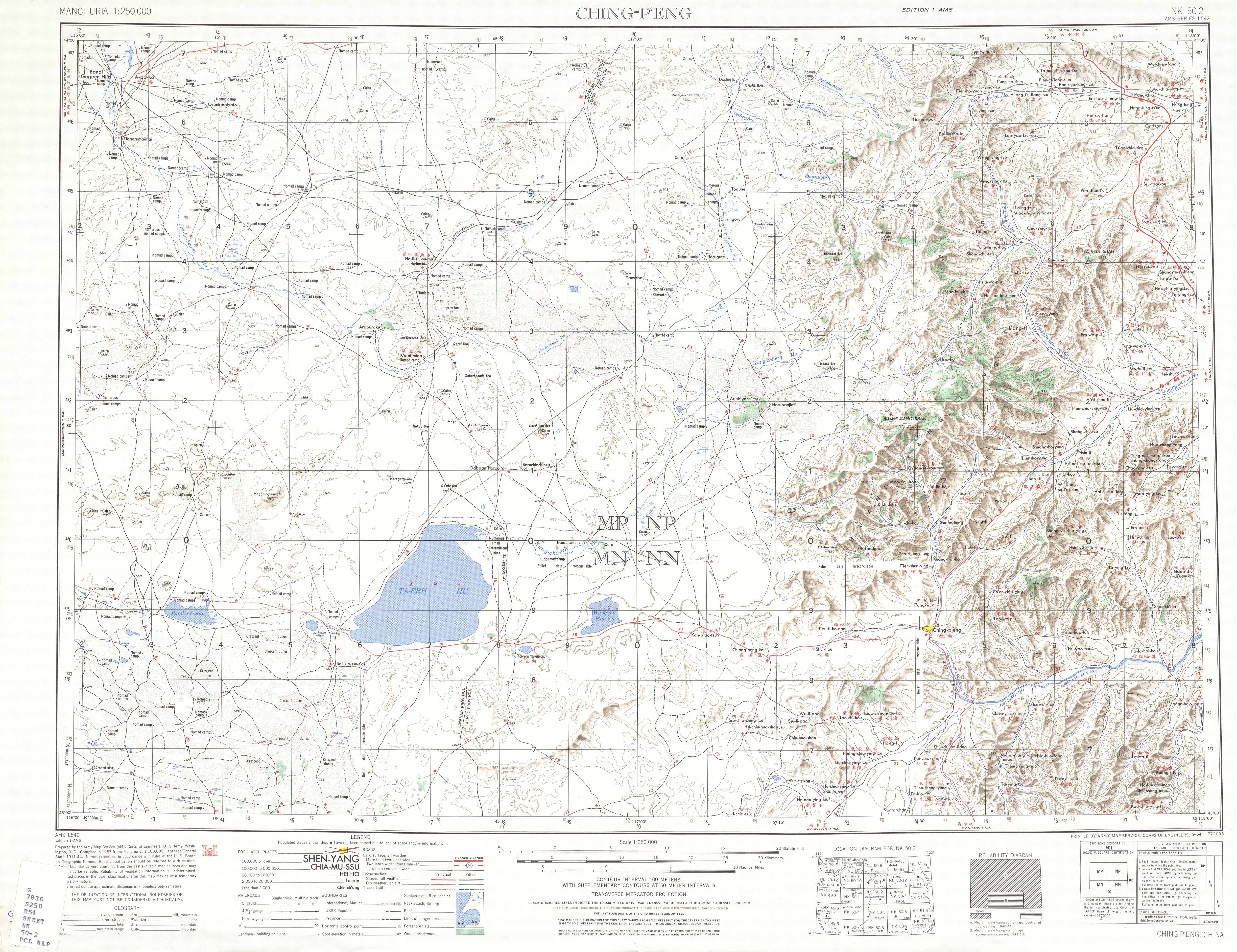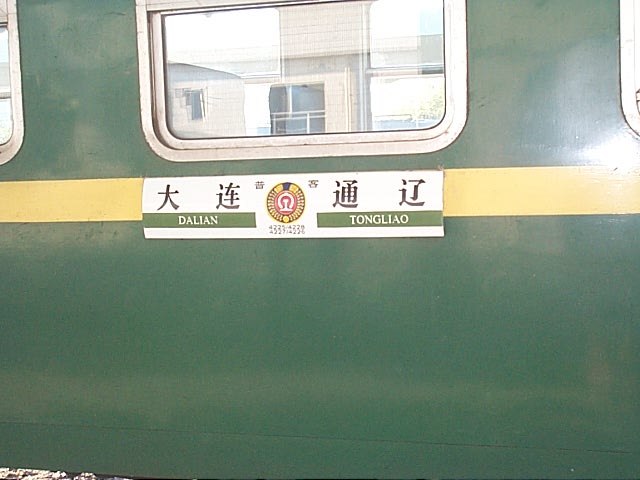|
China National Highway 303
China National Highway 303 (G303) runs from Ji'an, Jilin to Xilinhot, Inner Mongolia. It is 1,263 kilometres in length and runs northwest from Ji'an through Jilin and Liaoning and ends in Inner Mongolia. Route and distance See also * China National Highways The China National Highways (CNH/Guodao) () is a network of trunk roads across mainland China. Apart from the expressways of China that are planned and constructed later, most of the CNH are not controlled-access highways. History The bui ... External linksOfficial website of Ministry of Transport of PRC 303 Transport in Liaoning Transport in Jilin Transport in Inner Mongolia {{PRChina-road-stub ... [...More Info...] [...Related Items...] OR: [Wikipedia] [Google] [Baidu] |
Ji'an, Jilin
Ji'an (; formerly ) is a county-level city in the southwestern part of Jilin province, People's Republic of China. It is administered by the prefecture-level city of Tonghua and is the southernmost county-level division in the province. Ji'an has an area of and a population of approximately 230,000. The city was given its current status in 1988. Ji'an is separated from Manpo, Chagang Province, North Korea by the Yalu River; it has an international border running . History Archaeological excavations in the Ji'an area have unearthed several Yemaek sites along the Amnok River and its tributary the Hun River (Yalu River tributary), Hunjiang, which belong to the regional Jeulmun pottery period, Neolithic and Mumun pottery period, Bronze ages. After the fall of Wiman Joseon to the Han dynasty in 108 BCE, Ji'an was part of Goguryeo County under the administration of Xuantu Commandery. In 3 Common Era, CE, the second ruler of Goguryeo, Yuri of Goguryeo, King Yuri, moved the state's capit ... [...More Info...] [...Related Items...] OR: [Wikipedia] [Google] [Baidu] |
Transport In Liaoning
Transport (in British English), or transportation (in American English), is the intentional movement of humans, animals, and goods from one location to another. Modes of transport include air, land (rail and road), water, cable, pipeline, and space. The field can be divided into infrastructure, vehicles, and operations. Transport enables human trade, which is essential for the development of civilizations. Transport infrastructure consists of both fixed installations, including roads, railways, airways, waterways, canals, and pipelines, and terminals such as airports, railway stations, bus stations, warehouses, trucking terminals, refueling depots (including fueling docks and fuel stations), and seaports. Terminals may be used both for interchange of passengers and cargo and for maintenance. Means of transport are any of the different kinds of transport facilities used to carry people or cargo. They may include vehicles, riding animals, and pack animals. Vehicles may i ... [...More Info...] [...Related Items...] OR: [Wikipedia] [Google] [Baidu] |
National Highways In China
National may refer to: Common uses * Nation or country ** Nationality – a ''national'' is a person who is subject to a nation, regardless of whether the person has full rights as a citizen Places in the United States * National, Maryland, census-designated place * National, Nevada, ghost town * National, Utah, ghost town * National, West Virginia, unincorporated community Commerce * National (brand), a brand name of electronic goods from Panasonic * National Benzole (or simply known as National), former petrol station chain in the UK, merged with BP * National Car Rental, an American rental car company * National Energy Systems, a former name of Eco Marine Power * National Entertainment Commission, a former name of the Media Rating Council * National Motor Vehicle Company, Indianapolis, Indiana, USA 1900-1924 * National Supermarkets, a defunct American grocery store chain * National String Instrument Corporation, a guitar company formed to manufacture the first resonator g ... [...More Info...] [...Related Items...] OR: [Wikipedia] [Google] [Baidu] |
China National Highways
The China National Highways (CNH/Guodao) () is a network of trunk roads across mainland China. Apart from the expressways of China that are planned and constructed later, most of the CNH are not controlled-access highways. History The building of highways is seen as key to accelerating infrastructure construction. In 2003, completed investment in highway construction was 350 billion yuan and 219 key highway projects progressed, focusing mainly on the five north–south and seven east–west national arterial highways as well as highways in western China and in rural areas. By the end of 2004, the total length of highways open to traffic reached 1.871 million km, including of expressways up to advanced modern transportation standard, ranking second in the world. The nation's highway density has now reached 19.5 km per 100 km2. With the completion in 2008 of the five north–south and the seven east–west national arterial highways, totaling , Beijing and Shangha ... [...More Info...] [...Related Items...] OR: [Wikipedia] [Google] [Baidu] |
Hexigten Qi
Hexigten Banner (Mongolian script: ; ) is a banner of Inner Mongolia, China under the jurisdiction of Chifeng, bordering Hebei province to the south. In 1690 the Battle of Ulan Butung between Qing and Dzungar forces took place here. Etymology It was named after the Khishigten Mongol clan, who were considered to be the descendants of the Kheshig, the imperial guard of the Mongol Empire. Demographics There are 8 main ethnic groups (i.e. Han, Mongol, Hui, Manchu, Daur, Korean, Dong and Zhuang). The Mongols are of the Hishigten division. Climate Transport *China National Highway 303 *China National Highway 306 * Hanbai Highway * Jitong Railway Economy The main industries are mining, renewable energy, tourism, and stock breeding. From 2006 to 2008, Hexigten ranked No. 1 for 3 consecutive years in wind power production among all the counties of China with 532 wind turbines installed in 2008, totally installed generating capacity of 525 megawatt and annual energy generat ... [...More Info...] [...Related Items...] OR: [Wikipedia] [Google] [Baidu] |
Linxi County, Inner Mongolia
Linxi County ( Mongolian: ''Linsi siyan''; ) is a county of eastern Inner Mongolia, People's Republic of China. It is under the administration of Chifeng City, to the south-southeast. Climate Linxi County has a dry, monsoon-influenced humid continental climate (Köppen Köppen is a German surname. Notable people with the surname include: * Bernd Köppen (born 1951), German pianist and composer * Carl Köppen (1833-1907), German military advisor in Meiji era Japan * Edlef Köppen (1893–1939), German author and ... ''Dwb''), with very cold and dry winters, hot, somewhat humid summers, and strong winds, especially in spring. The monthly 24-hour average temperature ranges from in January to in July, with the annual mean at . The annual precipitation is about , with more than half of it falling in July and August alone. With monthly percent possible sunshine ranging from 54% in July to 74% in February, sunshine is abundant year-round, there are 2,949 hours of bright sunshine ... [...More Info...] [...Related Items...] OR: [Wikipedia] [Google] [Baidu] |
Bairin Right Banner
Bairin Right Banner (Mongolian language, Mongolian: ''Baɣarin Baraɣun qosiɣu''; ) is a Banner (Inner Mongolia), banner of eastern Inner Mongolia, China. It is under the administration of Chifeng City, to the south-southeast. Baarins, Baarin Mongols live here. The distinct Mongolian language, Mongolian dialect of this region is Baarin Mongolian. Climate References External linkswww.xzqh.org Banners of Inner Mongolia Chifeng {{InnerMongolia-geo-stub ... [...More Info...] [...Related Items...] OR: [Wikipedia] [Google] [Baidu] |
Bairin Left Banner
Baarin Left Banner ( Mongolian: ''Baɣarin Jegün qosiɣu''; ), or Bairin, is a banner of eastern Inner Mongolia, China, under the administration of the prefecture-level city of Chifeng. The banner spans an area of 6,644 square kilometers, and as of 2018, has a population of 340,020. Baarin Mongols live here. The distinct Mongolian dialect of this region is called Baarin. It is located at the intersection of two national highways: China National Highway 303 and 305. History Balin Left Banner has a long history, with archaeological digs dating to the 40th Century BC. Archaeological relics uncovered in the banner are believed to include those of the Hongshan culture and the Fuhe culture. Around the time China was undergoing the Warring States period, the area of Bairin Left Banner was home to the Shanrong and Donghu people. Later, the area would be home to the Wuhuan and the Xianbei. During the first few centuries of the Common Era, the area was home to the Khitan people ... [...More Info...] [...Related Items...] OR: [Wikipedia] [Google] [Baidu] |
Ar Horqin Banner
Ar Horqin Banner ( Mongolian: ''Aru Qorčin qosiɣu''; ) is a banner of eastern Inner Mongolia, People's Republic of China. It is under the administration of Chifeng City, about to the south-southwest. The banner lies on China National Highway 303, running from Ji'an, Jilin to Xilinhot, Inner Mongolia. The Mongolian dialect spoken in Ar Khorchin is not Khorchin, as the name suggests, but Baarin Baarin ( ar, بعرين, ''Baʿrīn'' or ''Biʿrīn'') is a village in northern Syria, administratively part of the Hama Governorate, located in Homs Gap roughly southwest of Hama. Nearby localities include Taunah and Awj to the south, Aqrab and H .... Climate References www.xzqh.org Banners of Inner Mongolia Chifeng {{InnerMongolia-geo-stub ... [...More Info...] [...Related Items...] OR: [Wikipedia] [Google] [Baidu] |
Kailu
Kailu County (Mongolian language, Mongolian: ''Ḵayilü siyan''; ) is a county in the east of Inner Mongolia, People's Republic of China. It is under the administration of Tongliao City, to the east, and China National Highway 303 passes through it. History As the traditional seat of Ar Khorchin, East Jaruud and West Jaruud, the 3 areas are abbreviated in Chinese as the 3 R's since each contains the word R transcribed as "LU" in Chinese. The 3 R's was then known as the 3 Lu's as well. In 1905, with the slogan of developing the 3 R's (開發三魯), the city took the name of such abbreviation and was named 開魯 (KAI LU). Climate Kailu County features a cold semi-arid climate (Köppen climate classification, Köppen ''BSk''), marked by long, very cold and dry winters, hot, somewhat humid summers, and strong winds, especially in spring. The monthly daily mean temperature in January, the coldest month, is , and in July, the warmest month, , with the annual mean at . The annua ... [...More Info...] [...Related Items...] OR: [Wikipedia] [Google] [Baidu] |
Tongliao
Tongliao (; mn, ''Tüŋliyou qota'', Mongolian Cyrillic: Байшинт хот) is a prefecture-level city in eastern Inner Mongolia, People's Republic of China. The area is and as of the 2020 census, its population was 2,873,168 (3,139,153 in 2010). However, the city proper made of Horqin district, had 921,808 inhabitants. The city was the administrative centre of the defunct Jirem League (; ). The original Mongolian name for Tongliao city proper (i.e. Horqin District) is Bayisingtu (), while the original name of the prefecture-level city is ''Jirem''. The Mongolian dialect spoken in this area is Khorchin Mongolian. History Human settlement in Tongliao and the surrounding Khorchin area dates from at least 1000 BC. The Donghu people, a tribe who spoke a proto-Mongolian language, settled in today's Tongliao area, north of Yan during the Warring States period. their culture was associated with the Upper Xiajiadian culture, characterized by the practice of agriculture and ani ... [...More Info...] [...Related Items...] OR: [Wikipedia] [Google] [Baidu] |





